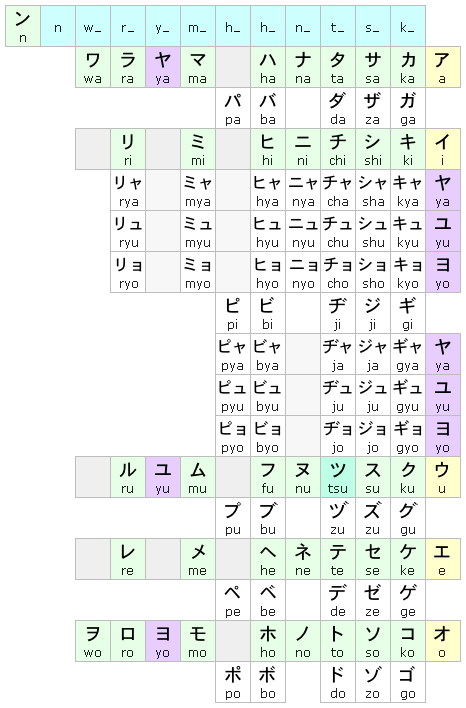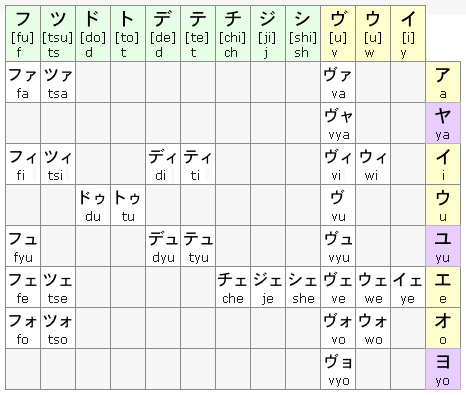
alternative lifestyles – speculative fiction – horror – fantasy

|
Stone Dragon Press alternative lifestyles – speculative fiction – horror – fantasy |
|
|
ToC |
||
|
katakana – 03 / 27 / 2014
|
||
| katakana is a syllabary; the kana (characters) only represent sounds in non-Japanese languages and have no other meanings. The blue boxes contain the consonants. The yellow boxes contain the five vowels and their kana. The green and purple boxes contain the 40 primary kana formed from a consonant-vowel pair, and the 'short n' kana. The white boxes contain secondary kana that are formed from the primary kana, and the small double slash diacritic mark, or ring diacritic mark, or small 'ya', 'yu', or 'yo' kana. As can be seen from the chart, these secondary kana represent modified primary sounds. | ||
 |
||
| The kana below are for foreign sounds for which there are no equivalent sound in Japanese. | ||
 |
||
| If you would like to practice writing Japanese in katakana, here is a katakana Keyboard based on the charts above – courtesy of shi-yaku-jin no hokora. | ||
|
|